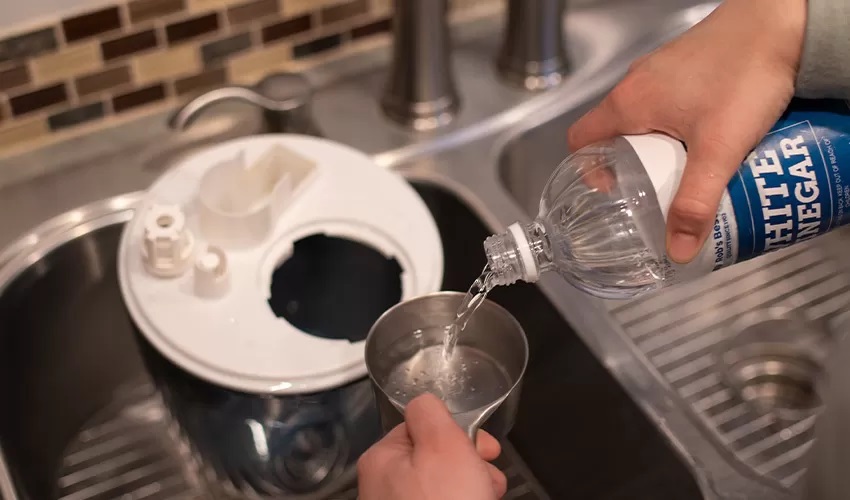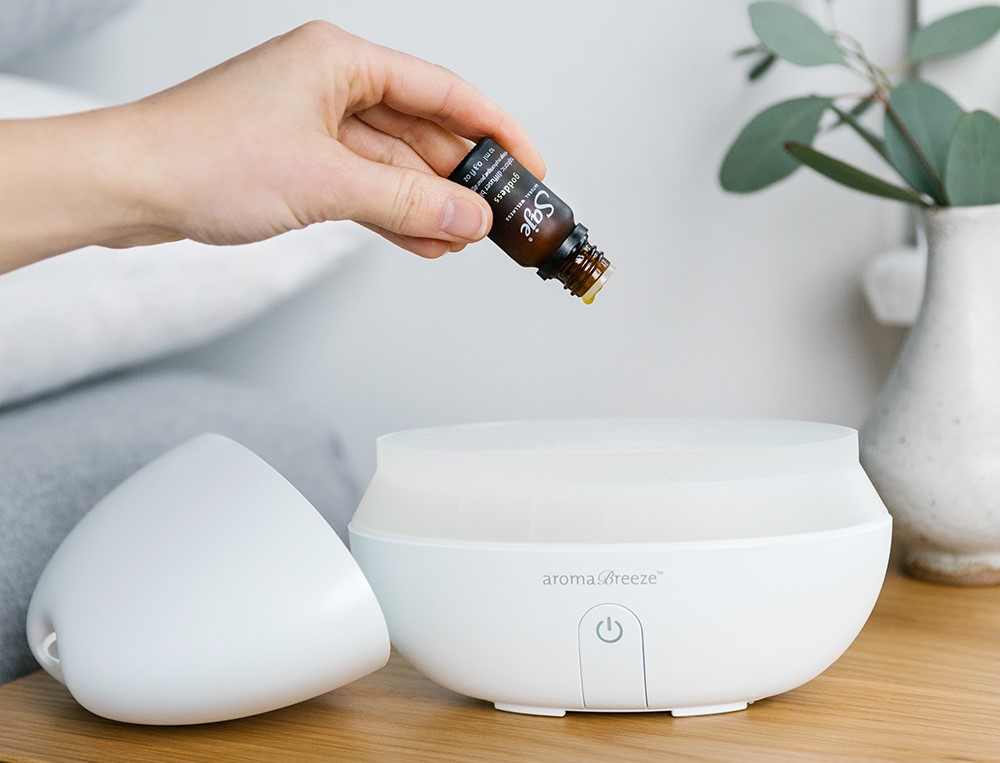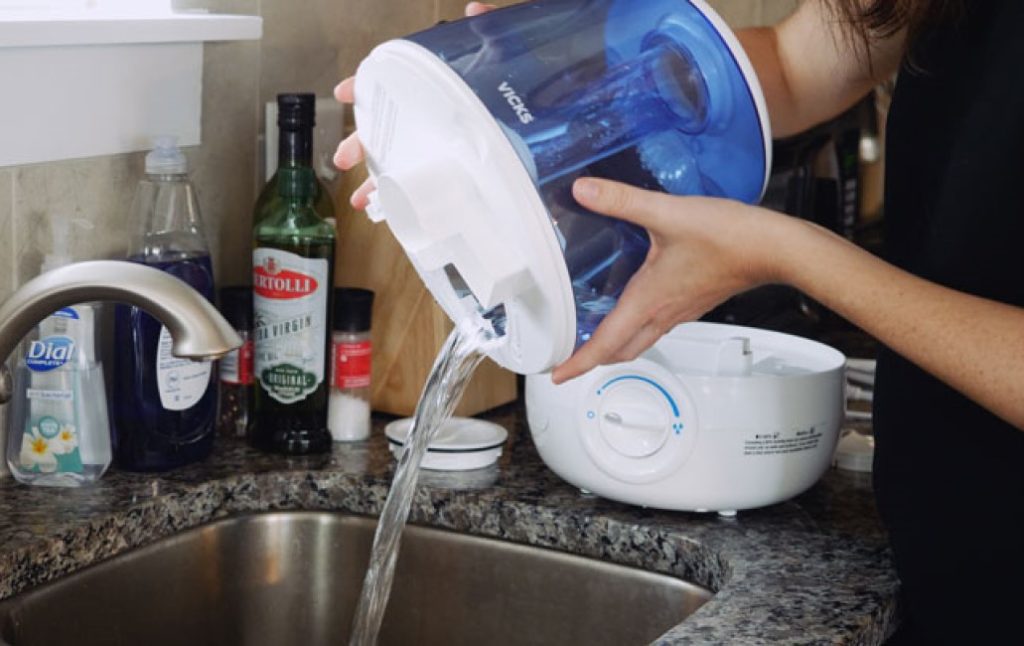

Humidifiers provide moisture indoors when the air around is dry. During the cold months, everything becomes dry, and most people prefer to use their humidifiers in the winter. If you live in a cold region, you would need one for your home. The problem with humidifiers, however, is they tend to give problems. It isn’t always easy finding the right one that won’t come with maintenance problems. This article will address more about humidifier troubleshooting and how to solve them. It is good you get a quality humidifier if you want to enjoy its benefits. The technology has improved over the years, and we now have humidifiers that are quieter and easy to maintain. Most users prefer the Vicks Humidifiers because they don’t give any problems and are portable.
There are some common problems that many people have experienced when using humidifiers. When this happens, there is no need to panic, it could just be a minor issue that you can easily fix yourself. We will look at the common troubleshooting problems of humidifiers.
There are times when you notice your humidifier has stopped working properly. One of the problems could be that it isn’t blowing mist. When this happens, you should get out the user manual from the manufacturer. Check to see the list of repairs that will affect your product warranty. Before you inspect the humidifier to identify the problem, first unplug it from the power source. Water and electricity are a dangerous combination, so you have to be very careful. You will need to drain out every last bit of water from the reservoir before inspecting the humidifier. When all this is done, you can then check for the likely reason why the humidifier isn’t blowing most and know how to solve the problem.
Another common problem is the issue of water in the humidifier. If the humidifier isn’t bringing out mist, it could be as a result of an empty reservoir. The humidifier cannot work properly without water in the reservoir. If the water is low, it will also affect how the unit works. When you notice that the appliance is not producing mist, check the reservoir to find out the problems. If the water is low or empty, fill it up. Temperature also affects the humidifier. If you are in a very dry environment, the humidifier will use up a lot of water and you will need to refill the reservoir as many times as possible.
Leakage is a different problem unlike when you are running low on water. Portable units usually experience this problem. The water can leak if you don’t place the reservoir tank the right way. Before you start using the humidifier, you should check that the reservoir tank is properly set. Another case where leakages may occur is in whole-house humidifiers. There are many reasons why water may leak from this unit. Before you call an expert, you need to follow these tips.
Check that the problem is not from your water system. Whole-house units make use of the water from your plumbing system like the rest of the house. It usually has a pipe that links it to the water supply system. If the water pressure is high, it can cause the water to leak and end up causing the valves to the cut-off in the humidifier.
The normal water pressure should not be below 125 psi. If the problem is from your water system, you will need to call a technician.
If the problem is not from the water system, the next place to check is the drainage tube. Whole-house units are designed with a drainage tube that lets out the water. If it is blocked, it can cause a leak. First, check to find out what could be blocking the hose and then remove it. You can also detach the pipe from the unit and run it with water to remove the object blocking it. Attach it back and ensure it is properly in its place.
If there is an object obstructing the filter of the whole-house humidifier, it can cause it to leak. The whole-house unit gives out steam when sir passes through its evaporator pad. It is similar to the portable humidifiers when the footer gets clogged with minerals. If the evaporator pad is clogged, you can clean the pad. The user manual usually has instructions on how to clean the evaporator pad.
The solenoid valve is the part of the unit that controls the water flow from the water source. It is also known as the electric valve. It automatically detects if there is enough water in the reservoir, and when the water reduces, it allows more water to fill it up. When the reservoir is full, the valve closes. Sometimes dirt may get trapped in the valve, and it will prevent it from closing properly. This usually causes leakage, and you will need to resolve this problem. You can do this by turning off the water supply from the main source, and then unplug the humidifier from the socket. Detach the solenoid valve but first, understand how to install it back before removing it. Run water through the valve to remove the debris and then return the valve to its original position.
While the humidifier uses water to produce steam, mineral particles can end up trapped inside the humidifier. This will cause the unit to stop working properly. Tap water usually has some minerals that can cause this problem. It could affect its steam production because the filter is clogged or the heating part of the appliance has been blocked by the mineral.
How do you remove the debris from the humidifier? If you are using a humidifier that heats the water, and it gets clogged from the water, you will need to get the debris out. The minerals don’t clog the appliance in one day, it gradually builds up until it eventually blocks it. The minerals form a thick crusty dark coat that prevents the water from being converted to steam. The best way to handle the problem is to cut off the thick layer of minerals stuck to the heating element. Most humidifiers have a special tool that you can use to open the cap of the appliance. Open the cap carefully with the tool and check the heating element. You can then chip off the thick layer of mineral deposits. You should not use any sharp object and avoid tampering with the heating element.
There is an alternative to this if you can’t clean the heating element while it is still connected to the humidifier. You can detach this part but you will need your user manual to understand how to do this right. When you chip off the mineral deposit, close the cap and then fill up the reservoir with water and turn the appliance on.
If you are using a cool-mist humidifier, the process of removing the debris is quite different. The cool mist appliance does not always come with a filter like a steamer. If it comes with one, can fix the problem by changing the filter or cleaning it. Always refer to your user manual for guidance before you touch anything in the humidifier.
If your power supply capacity is low, it may not allow the humidifier to function properly. In most cases, the appliance won’t come on. Check the motor of the humidifier to see if it is active and if its digital monitor is on. If the two are working well, it means the appliance is on. If not, it may be possible the problem is from the power. If you plug the unit into your wall socket and it fails to come on, the problem may be from the wall socket or power source. You should unplug it and test another appliance on the same socket to confirm your suspicion. If the appliance you plug in the socket works, then the problem is from the humidifier. You will need to take it out for repairs. If your warranty is still valid, you can send the humidifier to the manufacturer for repairs.
Now when you are aware of the most common humidifiers problems we want to make sure that you perfectly understand what type of humidifier you actually own, in order to make the problem solution even easier for you. They are:
This type of humidifier releases water in form of mist. It circulates humidity, and the mist released is evaporated before it touches the ground. The cool mist is built with a silent fan that thrusts and circulates the mists around the room. There are two types of this mist humidifier, the one that releases warm mist and the other cool mist. Some models have both functions and will heat the water to a certain degree before releasing it out, while others won’t heat the water.
The evaporative cool mist releases humidity with the help of its fan, which extracts air from the room, and circulates it around through a moist wick in the water. Some part of the water evaporates to create humidity, and then it blows the air back into the room. The evaporative cooling mist takes away the heat and cools the room.
Air Washers not only give humidity but also purify the air. This device uses its rotation discs to remove the impurities in the air. It takes out the dust and pollen particles while at the same time releasing clean air into the room. It is a good type of humidifier Trusted Source Humidifier - Wikipedia A humidifier is a device, primarily an electrical appliance, that increases humidity (moisture) in a single room or an entire building. In the home, point-of-use humidifiers are commonly used to humidify a single room, while whole-house or furnace humidifiers, which connect to a home’s HVAC system, provide humidity to the entire house. Medical ventilators often include humidifiers for increased patient comfort. Large humidifiers are used in commercial, institutional, or industrial contexts, often as part of a larger HVAC system. www.wikipedia.org because it provides more moisture to cover a much larger area, unlike the other types. This humidifier won’t develop any problems when in contact with mineral dust. The only issue is, air washers will require regular servicing and maintenance. You need to rinse it out frequently.
This is another humidifier that heats the water before distributing it as mist in the air. One of the perks of having the steam humidifier is that it helps get rid of bacteria and organic compounds.
Three of the four types of humidifiers come in three sizes. Their sizes determine where they will fit in your living space.
The tabletop humidifiers are the most affordable and can be used in a single room. You will need to refill it with water constantly because of its size. The size is mostly found in the family of ultrasonic cool mist humidifier. It also has a compact size that you can carry around for which usually the Crane Drop Ultrasonic Cool Mist Humidifier is praised for by so many users.
The room humidifiers have better coverage, like for example the units of Honeywell. You can use this site in a single room and also in a multi-room that measures around 650 to 1200 square feet. You can get the ultrasonic warm/cool humidifiers, air washers, and evaporative cool mist humidifiers of this size.
This is for much larger coverage areas, especially one that will humidify the whole house if all the doors are left open. The whole house coverage is usually around 1700 to 2700 square feet. If you have a large living space, this will be the most suitable humidifier for you.
Even though humidifiers come with their problems, it isn’t always an issue that can’t be fixed. Most times, you won’t need an expert, and you can resolve this problem yourself. It is important, however, that you get a good humidifier that won’t give any problems. Humidifiers need care and regular maintenance, especially if you want to enjoy using them for a long time. Whenever you are faced with humidifier troubleshooting, remember to refer to the manufacturer’s manual for instructions. Different brands have different operations, and you can understand your product better from the user manual. If you try these troubleshooting and still don’t know how to fix humidifiers, get your unit checked by a professional.





